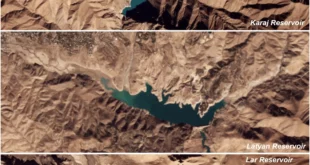Virtually every sector of Iran’s civilian economy is now subject to U.S. secondary sanctions, rendering additional sanctions progressively less significant.
Most of the economic damage affecting Iran’s economy is a product of the tightening of U.S. sanctions on Iran’s exports of oil imposed in May 2019.
The steady stream of U.S. sanctions designations is mostly symbolic, targeting Iranians and companies that have a minimal presence in the international financial system.
The U.S. implementation of a ‘humanitarian mechanism’ for exports of medicines to Iran reflects international criticism of the U.S. maximum pressure campaign on Tehran.
The Trump administration continues to impose a steady stream of new U.S. sanctions and sanctions designations on Iran as part of its ‘maximum pressure’ campaign on that country. The campaign appears intended to weaken Iran’s economy so severely that the regime will capitulate to a comprehensive list of demands from Washington that include ending efforts to extend Iran’s influence throughout the region.
Without question, the administration’s campaign has weakened Iran’s economy: The International Monetary Fund estimates that Iran’s economy will shrink by about 10% for the year ending in late March 2020. Much of that effect is a product of the Trump administration’s May 2019 revocation of waivers of U.S. sanctions on purchasers of Iranian oil. The decision has caused Iran’s oil exports to fall dramatically from about 1.2 million barrels per day (which already was half of Iran’s baseline exports, absent any sanctions of 2.5 million barrels per day), to a current level of about 250,000 barrels per day – more than half of which is purchased by China.
In the aftermath of the Iranian attack on Saudi critical infrastructure in September 2019, President Trump vowed to dramatically increase sanctions on Iran, as an alternative to a military response to that attack. Yet, it is evident that there are few, if any, new sanctions that the United States can impose that have any material impact beyond those already in force. In 2019 and thus far in 2020, the administration has taken steps that have largely consisted of sanctioning illicit financial networks and small energy brokers, high-ranking Iranian officials, and various Iranian industries that export mainly to Iran’s immediate neighbors.
For example, the administration has designated for sanctions such individuals as Foreign Minister Mohammad Javad Zarif and, in January 2020, the secretary-general of Iran’s Supreme National Security Council Ali Shamkhani. These individuals, as well as many of the companies recently sanctioned, have no U.S.-based assets and almost no involvement in the international financial system.
And the additional economic sectors sanctioned in January 2020, including Iran’s mining, textile, and construction industries, operate mainly in countries nearby Iran and involve no international banks or hard currency transactions. As such, the U.S. sanctions imposed recently will have minimal additional impact on Iran’s economy or on the individuals targeted for sanctions.
Other sanctions imposed appear to represent an attempt by the administration to symbolically support Iranians who have been protesting against the regime. As an example, in recent months the administration has sanctioned two Iranian prisons and a state prosecutor as gross violators of human rights. These sanctions do not affect Iran’s economy, but instead appear to support the view that the administration’s ultimate goal is to achieve the collapse of the Iranian regime, rather than to change Iran’s behavior in ways favorable to U.S. interests.
One particular sanction imposed in late 2019 appeared to backfire against the administration. In September 2019, the administration named Iran’s Central Bank as a terrorism entity, adding to the several sanctions already in force on the bank.
This latest designation, however, limited Iran’s ability to use assets in its Central Bank accounts abroad to purchase humanitarian goods (food and medicine) – items generally exempt from any sanctions. The designation caused an outcry among humanitarian relief organizations that U.S. sanctions were causing inordinate and unnecessary suffering among the Iranian people.
The criticism apparently prompted the administration to announce, in October 2019, a ‘new humanitarian mechanism’ that would facilitate U.S. approval for transactions of food and medicine to Iran. The administration announced in late January 2020 that the first transactions under the mechanism had been completed.
An alternate mechanism for Iran, launched in 2018 by the European Union countries, has yet to complete a transaction because of the fear among participants in triggering U.S. sanctions penalties. Not only has international criticism of U.S. policy on Iran increased, but the U.S. strategy appears to have brought the Iranian regime no closer to either collapse or to conceding to the litany of U.S. demands.
 Eurasia Press & News
Eurasia Press & News


